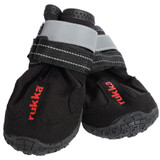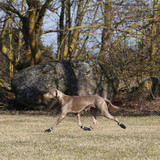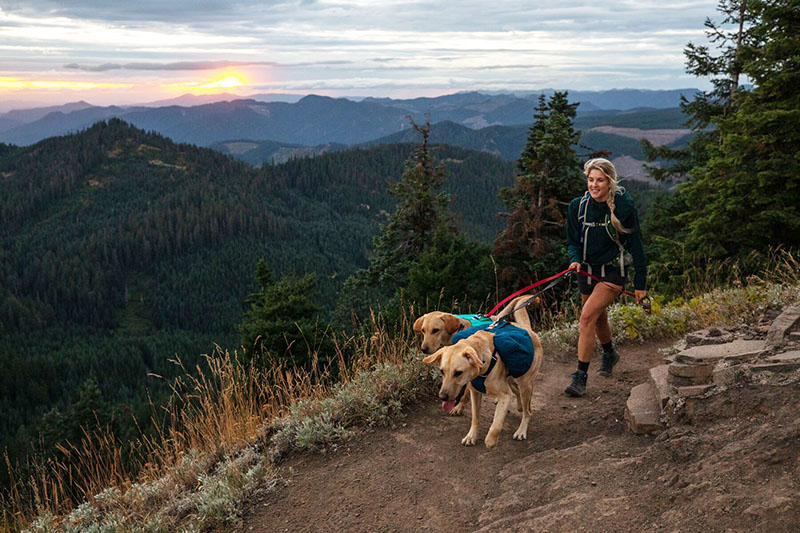-



Ruffwear Grip Trex Boots (Pair)
RRP £52.95£49.99 -



PAWZ Natural Rubber Dog Boots
From £14.99 -



-



Rukka Proff Shoes
RRP From £28.99From £26.99 -



Rukka Proff Boots
RRP From £37.99From £35.99 -



Dorwest Paw & Nose Balm
£10.89 -



PAWZ Max Wax Paw Balm
From £11.99 -



Ruffwear Dog Boot Liners (Set of 4)
RRP £19.95£18.99
Dog Boots
Protect your dog’s paws with our high quality, durable and comfortable dog boots. Whether your dog has a cut or injured paw, sensitive pads or needs protection from the elements such as rain and snow, there are plenty of styles, colours and sizes available. Choose from balloon shape rubber dog shoes or thicker rubber sole dog boots with more grip for rough terrain and a secure Velcro strap to keep them on. Suitable for all year round, even in hot summers and cold harsh winters, dog paw protectors are perfect for any outdoor adventure. Simply pack away in your bag, keep them handy in your pockets or put them on your dog at the beginning of your long walks or rocky hikes to give your pup some extra grip and protection on uneven ground or hard surfaces.
Related Blog Articles
Dog Boots FAQ's
Absolutely! In the UK, winter can bring about cold, damp conditions, and sometimes even snow. Dog boots, like the Ruffwear Grip Trex Boots, provide protection against these elements. Additionally, they offer protection against road salt, which can be very uncomfortable for dogs with cut or cracked paws during the winter months. Ensuring your dog's paws remain warm and free from potential injuries is crucial, and the right pair of boots can help achieve that.
Dog boots offer multiple benefits:
- Protection from rough and uneven terrains.
- Shielding from hot pavements during summer and cold grounds in winter.
- Preventing cuts, scrapes, and injuries.
- Offering additional grip on slippery surfaces.
Products like the PAWZ Natural Rubber Dog Boots are perfect examples of these benefits.
It varies for each dog. Some might adjust quickly, while others may need a few tries. It's essential to introduce the boots in a positive manner, rewarding them for wearing them. Starting with short durations and gradually increasing the time can help in the adjustment process.
While dog boots are designed for protection, it's not advisable for dogs to wear them continuously. They should be used primarily for outdoor activities, walks, or specific conditions like extreme temperatures. Always ensure the boots fit well and check regularly for any signs of discomfort.
Yes, especially in areas prone to snow or icy conditions. Cold weather can make the ground harsh for a dog's paws, leading to potential frostbite. Boots like the Rukka Proff Shoes are designed to offer protection during cold weather, ensuring your dog's paws remain warm and safe.
When chosen correctly, dog booties are beneficial. However, it's crucial to select the right size and ensure a comfortable fit. Ill-fitting boots can cause discomfort or even injury. It's important to note that dog boots are not just for extreme activities or weather conditions. They can be incredibly helpful for dogs with injured or cut paws, providing protection post-surgery to safeguard bandages, and assisting greatly with degenerative diseases like CDM (Canine Degenerative Myelopathy) in breeds like German Shepherds. Always consult with a vet or an expert before making a choice to ensure the best fit and purpose for your dog's needs.
Start by letting your dog wear them indoors for short durations. Praise and reward them for keeping the boots on. Gradually increase the wear time and introduce outdoor environments. The Ruffwear Single Grip Trex Boot is designed for comfort and can be introduced to your dog using these steps. Another great tip is to squeeze the boots in your hand like a stress ball. Flexing the rubber tends to make it more supple and helps break them in easier on your dog.
Yes, both extreme hot and cold conditions can be harmful to a dog's paws. Boots act as a barrier, protecting from hot pavements in summer and cold grounds in winter.
Based on the products from K9 Active, the Ruffwear Grip Trex Boots and Rukka Proff Dog Boots come highly recommended for their durability, comfort, and protection.
To measure, place your dog's paw on a piece of paper and mark the length and width. Compare these measurements with the size guide provided by the manufacturer. For comfort, introduce the boots gradually, rewarding your dog for wearing them, and ensure they are neither too tight nor too loose.


